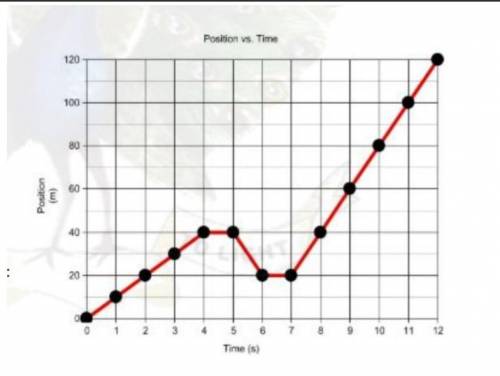
Physics, 19.06.2021 14:20, gaelle90701
Q4. Read the below passage carefully:
A Physics teacher tells his students about graphs in motiontograde 9 students. In distance time graphs distance becomes adependent variable and timeanindependent variable. You can calculate the speed from the graph. In velocity time graph velocity is on y axis is adependent variable and time on x axisan independent variable. We can calculate distance, acceleration, average velocity from the graph. He told his students to explore this graph. Let us also do that:4MBased on the graph below, answer the following:
(a).i) What is the average velocity from 0 seconds to 12 seconds?ii)What is the total displacement from 0 seconds to 12 seconds?
iii) What is the total distance from 0 seconds to 12 seconds? iv)What time intervals on the graph indicate that the object is not moving? (b). What is the velocity of the object between: i) 1 and 2 seconds? ii) 5 and 6 seconds? iii) 8 and 10 seconds?


Answers: 2
Other questions on the subject: Physics

Physics, 22.06.2019 12:10, zoebtharpe
Does anyone have the answers to online physics course plato course physics, semester a v3.0
Answers: 2

Physics, 22.06.2019 13:40, mvongphakdy8746
Consider a double atwood machine constructed as follows: a mass 4m is suspended from a string that passes over a massless pulley on frictionless bearings. the other end of this string supports a second similar pulley, over which passes a second string supporting a mass of 3m at one end and m at the other. using two suitable generalized coordinates, set up the lagrangian and use the lagrange equations to find the acceleration of the mass 4m when the system is released. explain why the top pulley rotates even though it carries equal weights on each side.
Answers: 2

Physics, 22.06.2019 19:40, mcmccann4317
It may seem strange that the selected velocity does not depend on either the mass or the charge of the particle. (for example, would the velocity of a neutral particle be selected by passage through this device? ) the explanation of this is that the mass and the charge control the resolution of the device--particles with the wrong velocity will be accelerated away from the straight line and will not pass through the exit slit. if the acceleration depends strongly on the velocity, then particles with just slightly wrong velocities will feel a substantial transverse acceleration and will not exit the selector. because the acc
Answers: 1
Do you know the correct answer?
Q4. Read the below passage carefully:
A Physics teacher tells his students about graphs in motionto...
Questions in other subjects:

History, 18.11.2020 22:00



Chemistry, 18.11.2020 22:00




English, 18.11.2020 22:00

Mathematics, 18.11.2020 22:00

English, 18.11.2020 22:00






